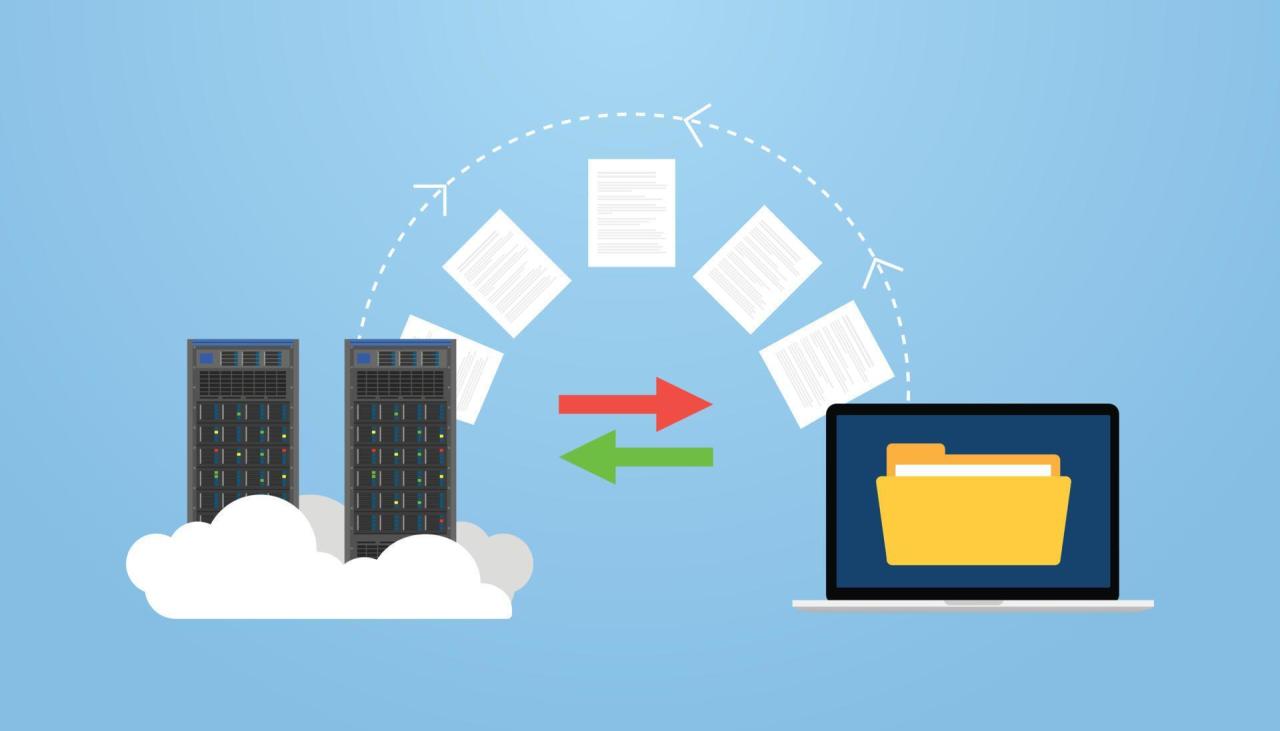In the dynamic and ever-evolving world of 2025, a server migration is no longer a luxury for large enterprises; it’s a fundamental requirement for businesses of all sizes seeking to scale, improve performance, and enhance security. The process of moving a server or an entire IT infrastructure from one location to another—whether from an on-premise data center to the cloud, or between different cloud providers—is a delicate and complex operation. A single misstep can lead to catastrophic data loss, prolonged downtime, and significant financial repercussions. An essential server migration guide is not just a list of technical steps; it is a comprehensive, strategic blueprint designed to ensure a smooth, secure, and successful transition. This in-depth article will walk you through every critical phase of a server migration, from the initial planning and assessment to the final launch and post-migration review. By understanding and following this methodical approach, you can mitigate risks, minimize disruption, and unlock the full potential of your new server environment.
The Foundational Phase

The success of any server migration hinges on the quality of its planning. This phase is about meticulous preparation, leaving no stone unturned and no detail to chance. A thorough assessment of your existing infrastructure is the first and most crucial step.
A. The Discovery and Inventory Audit
Before you can move your infrastructure, you must understand exactly what you have. A complete inventory audit is the starting point.
- Map All Dependencies: Identify every application, database, and service running on your existing servers. Crucially, map out their dependencies. Does a customer relationship management (CRM) system rely on a specific database? Does a website pull data from an external API? Missing a single dependency can cause a catastrophic failure post-migration.
- Document Configurations: Document the configuration of your operating systems, networking settings, firewalls, and security protocols. This includes IP addresses, DNS settings, and user access permissions.
- Analyze Performance and Usage: Assess the performance of your current servers. What is the average CPU, RAM, and disk usage? This data is invaluable for accurately sizing your new server environment, preventing over-provisioning (which wastes money) or under-provisioning (which leads to performance issues).
B. Defining Your Migration Strategy
There is no one-size-fits-all approach to migration. Your strategy will depend on your specific goals, the nature of your applications, and your tolerance for downtime.
- The “Lift and Shift” Method: This is the simplest approach, where you essentially copy your entire existing environment to the new server with minimal changes. It’s fast and reduces the complexity of re-architecting applications. However, it may not take full advantage of the new environment’s capabilities, especially in the cloud.
- The “Re-platforming” Method: This involves making some small changes to your applications to optimize them for the new environment. For example, you might move from a traditional database to a managed cloud database service. This offers better performance and scalability without a full re-write.
- The “Re-factoring” Method: This is the most complex and time-consuming approach. It involves a complete re-writing of your applications to take full advantage of the new environment. While it requires a significant initial investment, it can lead to massive long-term benefits in terms of scalability, cost, and agility.
C. Choosing Your Destination Environment
The decision to migrate to the cloud or between different cloud providers is a strategic one that requires careful consideration of several factors.
- On-Premise to Cloud: A migration to the cloud offers scalability, global reach, and a pay-as-you-go model. You’re freed from the burden of hardware maintenance and physical security. However, it requires a different approach to security and cost management.
- Cloud to Cloud: A cloud-to-cloud migration might be driven by cost savings, a need for specific features, or a desire for better performance. It can be complex due to the different architectures and services offered by each provider (e.g., migrating from Amazon Web Services to Google Cloud Platform).
The Pre-Migration Phase
Once your plan is in place, the pre-migration phase is all about preparing for the move. This is where you create a staging environment and conduct rigorous testing to ensure a seamless transition.
A. The Staging Environment
A staging environment is a mirror of your production environment. It’s a critical tool for testing and validating your migration strategy without impacting live users.
- Create a Replica: Build a replica of your production server in the new environment. Install the operating system, applications, and databases, and configure all the networking settings.
- Replicate the Data: Copy a recent backup of your production data to the staging environment. This allows you to test your applications with real-world data.
- Perform End-to-End Testing: Rigorously test every function of your applications in the staging environment. Test user logins, forms, database queries, and any other critical functionality.
B. The Communication Plan
A server migration, even a well-planned one, can be nerve-wracking for stakeholders and end-users. A clear communication plan can alleviate stress and build trust.
- Notify Stakeholders: Inform all relevant stakeholders—employees, customers, and partners—about the migration well in advance. Explain what is happening, why it’s happening, and what the benefits will be.
- Set a Clear Timeline: Provide a clear timeline for the migration, including the date and time of the cutover. This allows everyone to plan for the downtime.
- Create a Contingency Plan: Develop a contingency plan in case something goes wrong. This should include a rollback strategy to revert to the old server and a clear communication plan for updating everyone on the status of the migration.
C. Final Data Backup
Just before the cutover, perform a final, full data backup of your production server. This is your last line of defense against data loss. Ensure the backup is successful and that the data is easily accessible for a quick restore if needed.
The Execution Phase
The cutover is the moment of truth. It is the process of switching from the old server to the new one. This phase should be executed with precision and extreme care.
A. The Planned Downtime
The cutover will require some planned downtime. The goal is to minimize this disruption as much as possible.
- Switch the DNS: The most common method of cutover is to update the Domain Name System (DNS) records to point to the new server’s IP address. The DNS propagation can take some time, so be prepared for a brief period of inaccessibility.
- Monitor the New Server: During the cutover, closely monitor the new server’s performance. Is the CPU usage within the expected range? Is the RAM usage stable? Is the network traffic flowing as expected?
B. The Verification and Validation
After the cutover, you need to verify that everything is working as intended.
- Run Tests: Run all your end-to-end tests again to ensure that all your applications and services are functioning correctly.
- Check the Logs: Check the logs for any errors or warnings. This can provide early warnings of potential problems.
- User Acceptance Testing (UAT): Have a small group of end-users test the new server. Their feedback is invaluable for catching any issues that were missed during internal testing.
The Post-Migration Phase

The migration isn’t over when the new server goes live. The post-migration phase is about ensuring the long-term health and efficiency of your new environment.
A. The Performance Review
Over the first few weeks, closely monitor the performance of your new server.
- Analyze Key Metrics: Are the CPU, RAM, and disk usage as you expected? Are there any unexpected bottlenecks? This analysis can help you fine-tune your resource allocation and save on costs.
- Optimize for the New Environment: If you migrated to the cloud, explore the native services and features offered by your provider. Could you use a managed database service to improve performance and reduce management overhead? Could you use an object storage service to reduce the cost of storing large files?
B. Decommissioning the Old Server
Once you are confident that the new server is stable and reliable, you can begin the process of decommissioning the old one.
- Perform a Final Backup: Perform a final, full backup of the old server and store it securely. This is a critical step for archival purposes and as a final fallback.
- Shut Down and Wipe: Shut down the old server and, if you are not physically destroying the drives, securely wipe all the data to prevent any security breaches.
- Review the Budget: Review your new server costs and compare them to your old ones. Are you seeing the cost savings you expected? Are there any unexpected costs you need to address?
Conclusion
A server migration is a journey, not a single event. It is a process that requires a strategic approach, meticulous planning, and a deep understanding of your infrastructure. This guide has provided you with a comprehensive roadmap for that journey, from the foundational phase of discovery and assessment to the final steps of post-migration optimization. The key to a successful migration is to prioritize preparation and testing. A well-planned migration, even a complex one, can be executed with minimal disruption and a high degree of confidence.
The benefits of a successful migration are immense. They include improved performance, better security, greater scalability, and a more agile infrastructure that can support your business’s long-term growth. The world of technology is constantly changing, and a server migration is an essential skill for staying competitive and relevant. By following this guide, you can transform a daunting task into a rewarding project that positions your business for success in the years to come. The effort is worth it, and the peace of mind that comes with a secure and well-functioning server is immeasurable.










